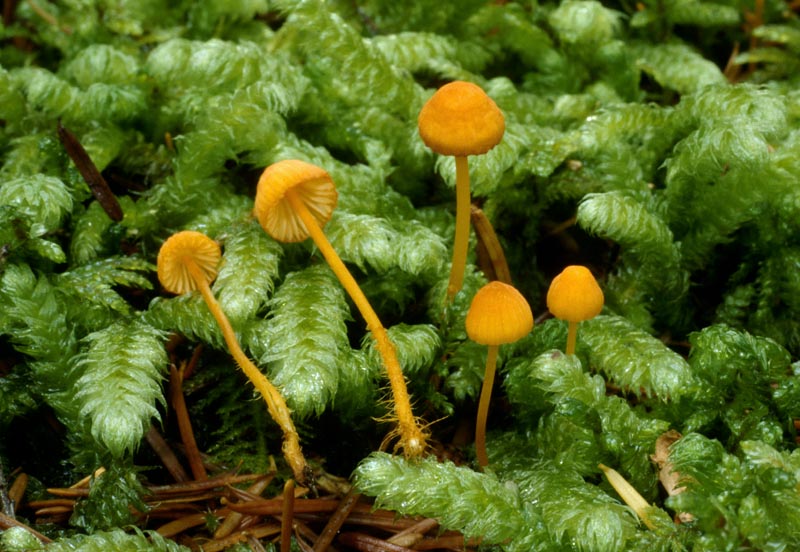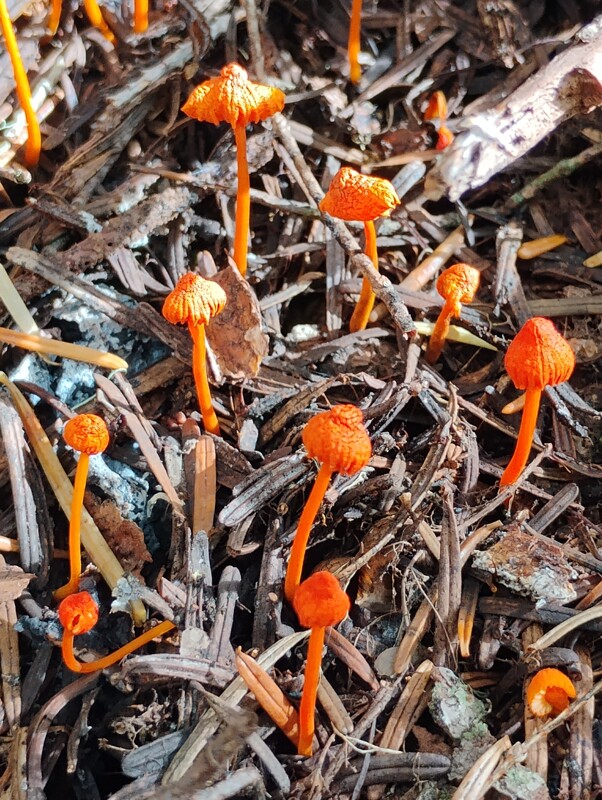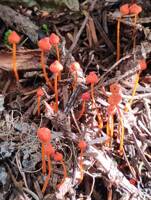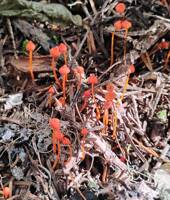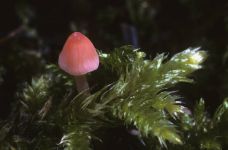Distribution: It occurs less commonly elsewhere in northern North America and also in Europe. M. strobilinoides seems to be most common at mid-elevations in the mountains, often in association with pines.
Conservation Status: Not of concern
Even though it usually is rather smallish, Mycena strobilinoides can, in Alexander Smith’s words, “add considerable color to the often otherwise dull needle carpet under conifers” when it is present in troops of hundreds of fruitbodies. The fruitbodies are brilliant orange overall, even more intense orange on the edge of the gills, and are covered with long orange hairs at the base of the stipe. The spores are 7--9 x 4--5 µm, and the abundant cheilocystidia and pleurocystidia are variably flask-shaped with short necks to clavate and in all cases with abundant short knobby projections; they often contain pale to bright orange contents.
PNW Herbaria: Specimen records of Mycena strobilinoides in the Consortium of Pacific Northwest Herbaria database
CalPhotos: Mycena strobilinoides photos

